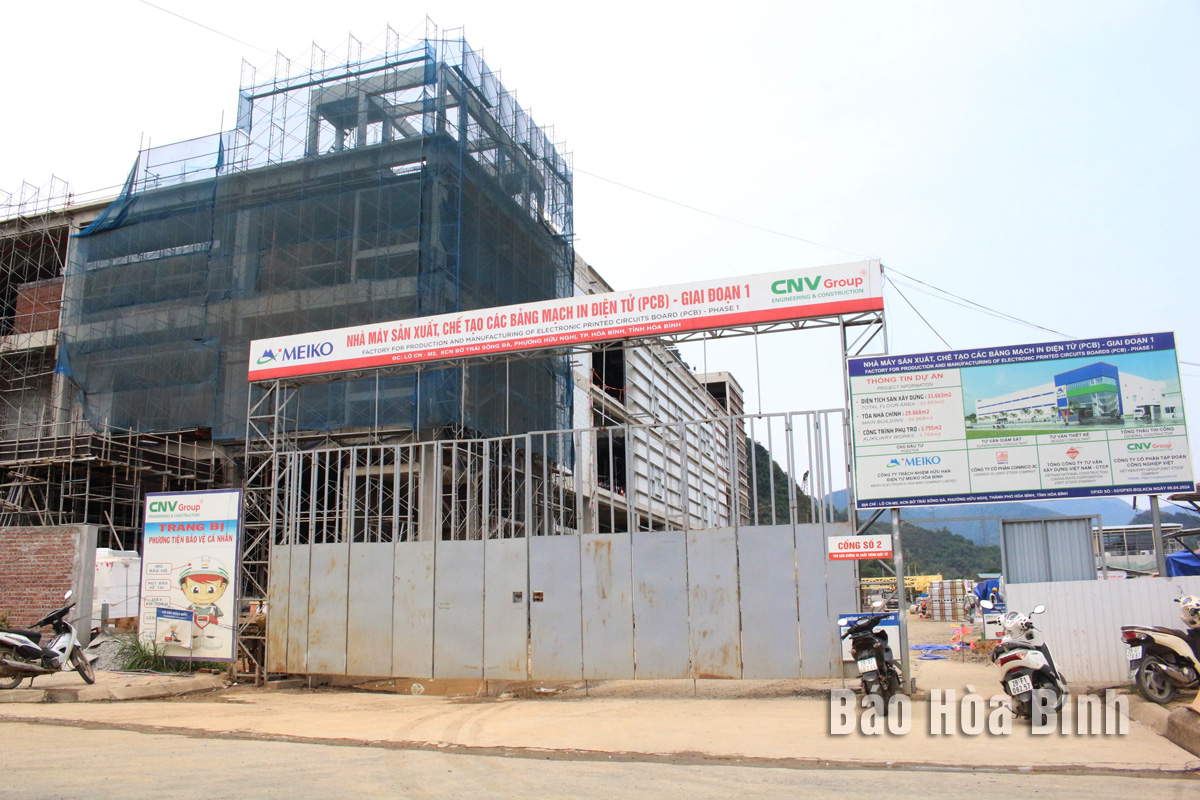
As part of efforts to restructure and accelerate the development of its industrial and handicraft sectors, Hoa Binh province is focusing on the development of industrial parks (IPs) and industrial clusters (ICs) with synchronous infrastructure to attract strong investment.
Following comprehensive infrastructure upgrade, the Da River Left Bank Industrial Park (Hoa Binh city) secures a major investment worth over 200 million USD from Japan’s Meiko Group.
According to the Hoa Binh Industrial Park Management Board, five new investment projects were granted registration certificates in the first four months of this year, with a total committed capital of 2.7 million USD and 310.54 billion VND (12.42 million USD). To date, Hoa Binh’s IPs have attracted 117 projects, including 28 foreign-invested ones valued at 435.05 million USD, and 89 domestic projects totaling more than 10.52 trillion VND. Currently, 71 projects are operational, creating local jobs, diversifying the local economic structure, and contributing significantly to the state budget.
Under the province’s master plan for 2021–2030, with a vision to 2050, Hoa Binh aims to develop 16 IPs covering nearly 3,904 ha, eight of which were previously planned and eight newly designated.
On the IC front, the province has outlined 38 clusters totaling around 2,209 ha, including 17 pre-existing and 21 newly added. To date, 15 out of 38 clusters have been officially established, covering a total area of around 705 ha, with an average occupancy rate of 41.3%.
The standing board of the provincial Party Committee stressed the importance of effectively following mechanisms and policies to pool investment resources for infrastructure development both inside and outside IZs and ICs, particularly those located in key economic areas and among the province’s strategic projects.
In the process of attracting investment into IZs and ICs, priority should be given to large-scale industrial projects and reputable enterprises with effective production and business operations, especially those applying high technology in manufacturing, supporting industries, and electronics. Investment in industries serving agriculture and rural development is also encouraged. These efforts aim to strongly support the restructuring of the industry and handicraft sectors toward higher technological content, environmental friendliness, and enhanced added value and competitiveness of industries and products.
In Lac Thuy district, communes have been succeeded in promoting their One Commune-One Product (OCOP) products while others are still struggling to position their typical farming products in market. Some communes in the district still fail to have their products met OCOP programme’s requirements, while others have seen their certifications expired.
The inspectorate agency of Hoa Binh province has issued Official Dispatch No. 1090/TTr-PCTN to provincial departments, agencies, localities, business associations, enterprises, and investors regarding measures to improve informal component indexes of the Provincial Competitiveness Index (PCI).
Hoa Binh is taking concrete steps to improve its investment environment, with a strong focus on supporting businesses, settling obstacles for strategic investors, and creating opportunities for robust development in the coming years.
Under the blazing early summer sun, the construction site of Nhuan Trach Industrial Park (IP) in Luong Son district is abuzz with activities from dawn to dusk, a testament to the determination of the investor to meet their construction targets on schedule.



